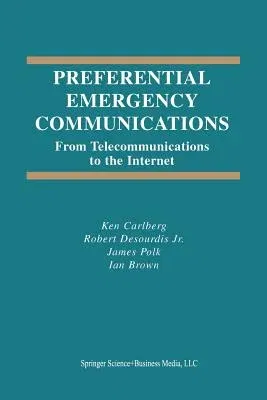With the tragic airline disaster in New York City, on September 11th,
2001, the subject of emergency communications has become very important.
Preferential Emergency Communications: From Telecommunications to the
Internet is intended to provide an in-depth exposure to authorized
emergency communications. These communications generally involve
preferential treatment of signaling and/or data to help ensure
forwarding of information through a network. This book covers examples
ranging from private networks to current investigations using Next
Generation Networks (i.e., IP based communications). The information
acts as a reference for network designers, network vendors, and users of
authorized emergency communications services.
Preferential Emergency Communications: From Telecommunications to the
Internet*,* a professional monograph, is divided into three sections.
The first describes systems and protocols that have been deployed as
private networks for use by government agencies like the U.S. Department
of Defense. This section also presents an in-depth discussion on MLPP.
We then present current work in the area of Land Mobile Radio, commonly
used by local emergency personnel such as police and fireman. This
second section also describes systems that have been deployed over the
public switched telephone network. Finally, the third section presents
insights on trying to support emergency communications over TCP/IP
networks and the Internet. In this last item we look into what IETF
protocols can be considered candidates for change, as well as those
protocols and applications that should not be altered.
Preferential Emergency Communications: From Telecommunications to the
Internet is designed to meet the needs of a professional audience
composed of practitioners and researchers in industry. This book is also
suitable for senior undergraduate and graduate-level students in
computer science and electrical engineering


